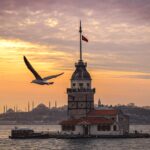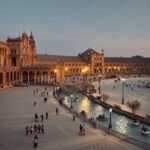Holi: Festival of Colors
Introduction
One of the most vibrant and joyful reflections of India’s enchanting cultural heritage, Holi is a festival of colors celebrated every year to mark the arrival of spring. Also known as the “Festival of Colors,” Holi has gained popularity in India and worldwide, bringing people together. With its roots in Hindu mythology, this festival symbolizes the victory of good over evil, the invigorating energy of spring, and new beginnings.
The Story of Holi
The story of Holi is based on the legend of the Hindu god Vishnu’s triumph over the evil king Hiranyakashipu and his sister Holika. Holika, wearing a cloak that made her immune to fire, attempts to burn Prahlad, a devout follower of Vishnu. However, Prahlad is saved by Vishnu’s grace while the flames consume Holika. The bonfires lit during Holi represent the burning of Holika and the destruction of evil.
The festival is celebrated on the full moon day of the Phalguna month (usually in February or March) and lasts two days. The first day is called “Holika Dahan” and involves lighting bonfires. The second day is “Dhulandi, ” filled with playful games using colored powders and water.
Holi is more than just a religious festival; it is an event that strengthens social bonds and eliminates caste and social status barriers. People reinforce the feeling of unity and togetherness by throwing colored powders at each other, singing songs, and dancing. Holi is also an opportunity for forgiveness, renewal, and new beginnings. Old grudges are forgotten, estranged friends reconcile, and everyone turns over a new leaf.
Holi Celebrations
The Dance of Colors

Holi’s most eye-catching and enjoyable part is the playful games with colored powders. These powders, called “Gulal,” are traditionally made from cornstarch and natural dyes. Throughout the festival, people gather in the streets, parks, and homes, throwing colored powders at each other and squirting water with water guns and buckets. Everyone becomes colorful, and joyful chaos ensues. This colorful battle eliminates social status and caste differences, equalizes everyone, and strengthens the sense of unity and togetherness.
Traditional Clothing and Music
During Holi celebrations, people usually wear white or light-colored clothes. This is because the colored powders become more visible on these garments, reflecting the festival’s atmosphere. Women often prefer traditional Indian attire like sarees or lehengas, while men opt for comfortable clothes like kurtas or dhotis.
Another indispensable element of Holi is music. Traditional Holi songs and Bollywood music are played in the streets and homes throughout the festival. People dance, have fun, and take the excitement to new heights, accompanied by the songs.
Holika Dahan: Bonfires and the Burning of Evil
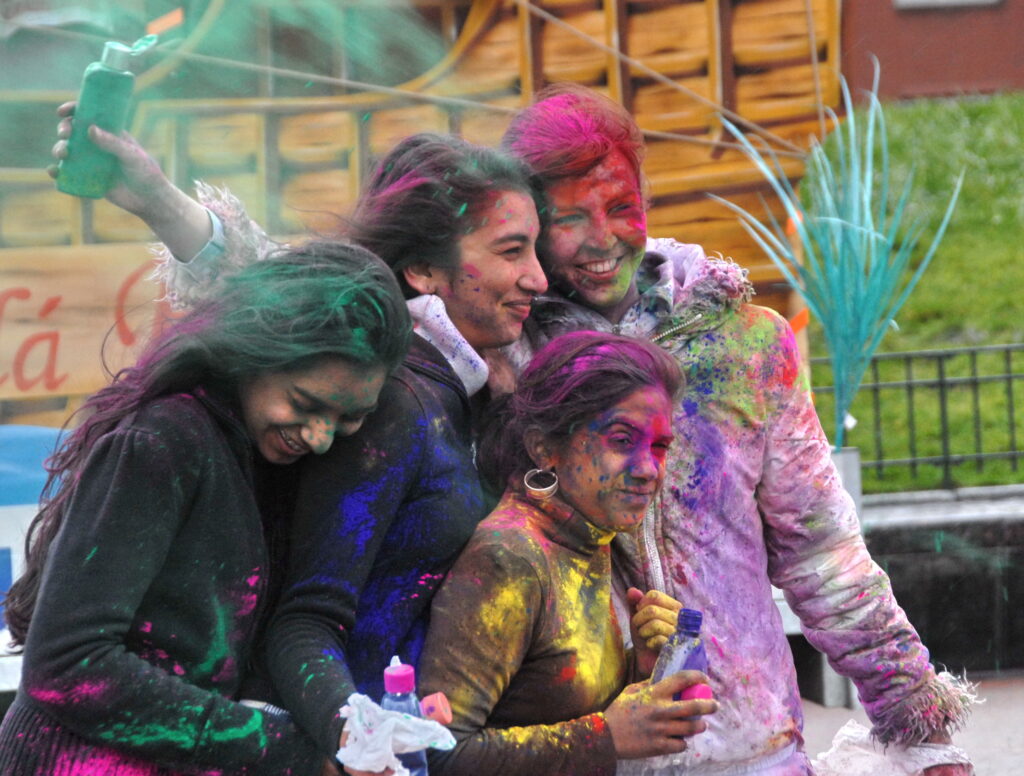
On Holika Dahan, the first day of Holi celebrations, large bonfires are lit in the evening. These fires symbolize the burning of the evil character Holika and the victory of good over evil. People gather around the fire, pray, and sing songs. Holika Dahan is seen as an opportunity for purification from evil and new beginnings.
Delicious Holi Snacks and Drinks
Holi celebrations are a visual feast and a festival of flavors. Various specially prepared snacks and drinks are served throughout the festival. Some of these are:
Gujiya
A deep-fried pastry is often filled with dried fruits and khoya (a milk product).
Malpua
A type of pancake made with milk, flour, and sugar.
Thandai
It is a traditional drink made with milk, spices, nuts, and sometimes bhang (cannabis).
Lassi
A refreshing yogurt-based drink, usually consumed in mango, rose, or plain flavors.
These delicious treats add flavor and energy to the Holi celebrations. Families and friends gather to enjoy these special foods and drinks.
The Spiritual Significance of Holi
Beneath Holi’s colorful and playful atmosphere lies a profound cultural and spiritual meaning. This festival symbolizes many essential values and beliefs beyond just celebrating the arrival of spring:
The Victory of Good Over Evil
The origins of Holi are rooted in the legend of the Hindu god Vishnu’s triumph over the evil king Hiranyakashipu and his sister Holika. This legend demonstrates that good will always prevail over evil, and justice will be served. The bonfires lit during Holi celebrations symbolize the destruction of Holika and the cleansing of evil.
Strengthening Social Bonds
Holi is a festival where people from all castes, creeds, and social statuses come together. The playful games with colored powders and water remove barriers between people and strengthen the feeling of unity and togetherness. This holds significant meaning, especially in a country like India, where social hierarchy is prominent.
Forgiveness, Renewal, and New Beginnings
Holi is also an opportunity for forgiveness, renewal, and new beginnings. Old grudges and disagreements are set aside, people reconcile, and everyone turns over a new leaf. Like the renewal of nature with the arrival of spring, people also renew their inner selves and cleanse themselves from negativity with Holi.
Holi Celebrations in Different Regions
Although Holi is celebrated in every corner of India, the ways of celebration vary from region to region. Each region reflects its cultural heritage and traditions in Holi celebrations, adding unique diversity to the festival.
Vrindavan and Mathura
These two cities are known as the places where the Hindu god Krishna spent his childhood. Therefore, Holi is celebrated here with great enthusiasm and a religious atmosphere. The celebrations focus on the love story of Krishna and Radha. People wear traditional clothes, sing songs, dance, and play with colored powders. The Banke Bihari Temple in Vrindavan is one of the most popular places for Holi celebrations.
Barsana
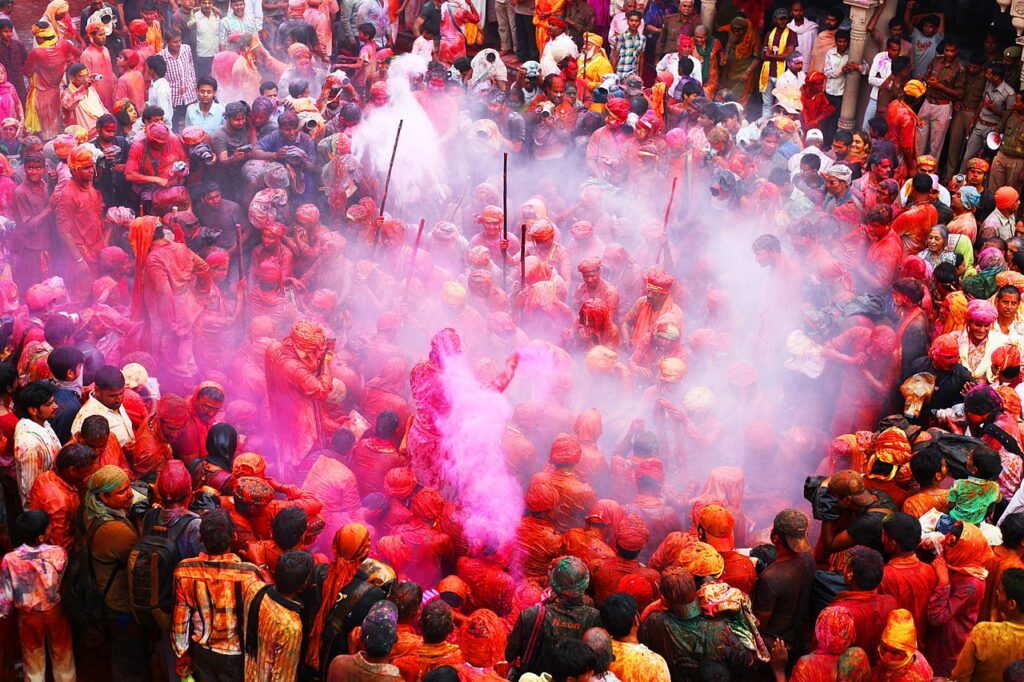
Located in Uttar Pradesh, the village of Barsana is famous for the “Lathmar Holi” tradition. In this traditional game, women chase men with sticks while men try to protect themselves with shields. This playful game is based on the legend of Krishna playing pranks on Radha and her friends. Lathmar Holi offers a very entertaining and colorful spectacle for the spectators.
Jaipur
Known as the “Pink City,” Jaipur is located in Rajasthan. Here, Holi is celebrated in a way that reflects the royal family’s traditions. People watch traditional dance performances, listen to live music and play with colored powders at special events in the city’s palaces and gardens.
Punjab
In the Punjab region of North India, Holi is celebrated as “Hola Mohalla.” The Sikh community mainly celebrates this festival and focuses on events such as martial arts demonstrations, sword fighting, and horse riding rather than the colorful atmosphere of Holi.
Goa
Goa is a state located on the west coast of India, and Holi is known here as “Shigmo.” Goa’s Holi celebrations are notable for their traditional dance performances, parades, and colorful costumes. The festival is also an opportunity to celebrate the arrival of spring and the harvest.
South India
Although Holi is not as widely celebrated in South India as in North India, some regions still hold traditional rituals and celebrations. For example, in Tamil Nadu, Holi is known as “Kamadahanam” and is based on legends about Kamadeva (the god of love).
Holi’s cultural and spiritual significance elevates this festival beyond just a fun event and imbues it with profound social and religious importance.
The different ways of celebrating Holi in various regions reflect India’s cultural diversity and richness. Each region’s unique traditions and rituals make Holi even more special and unforgettable.
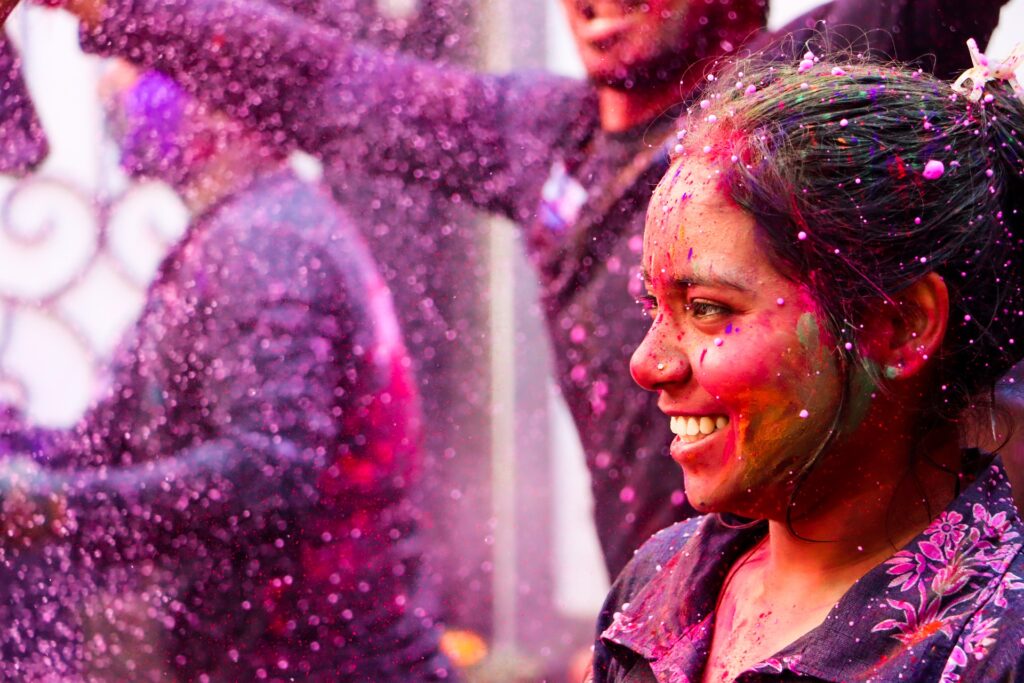
Tips for a Safe Holi Celebration
When participating in Holi celebrations, it’s essential to pay attention to some key points to ensure both your safety and a pleasant experience:
Wear old and comfortable clothes
Colored powders can stain clothes, so choose old and comfortable garments.
Protect your skin and hair.
Colored powders can irritate your skin and hair. Apply protective oils or creams to your skin and hair before participating in the celebrations.
Protect your eyes
Wear sunglasses to prevent colored powders from getting into your eyes.
Don’t bring valuables.
Leave valuables such as your phone and wallet at home or carry them in a waterproof bag to protect them from water and powders.
Be careful in crowded environments.
Be cautious in crowded environments during Holi celebrations, and hold your bag or phone tightly.
Participating in the Holi festival in India is a unique opportunity to experience different cultures and meet new people. This festival will leave you with colorful photos and unforgettable memories that will remain in your heart forever.
Frequently Asked Questions about Holi Festival
What is Holi, and why is it celebrated?
Holi is a Hindu festival celebrated in India to mark the arrival of spring. It is also known as the “Festival of Colors” and symbolizes the victory of good over evil, new beginnings, and social unity.
When is Holi celebrated?
According to the Hindu calendar, Holi is celebrated on the full moon day of Phalguna, which usually falls in February or March.
How is Holi celebrated?
Holi celebrations usually last for two days. The first day is called Holika Dahan, and bonfires are lit. The second day is Dhulandi, and people have fun throwing colored powders and water at each other. The Holi celebrations also include traditional songs, dances, and delicious food.
Are the colored powders used in Holi harmful?
Traditionally, the colored powders used in Holi were made from natural sources. However, synthetic dyes are also widely used today. Some of these dyes can cause skin irritation or allergic reactions. Therefore, it is essential to take precautions to protect your skin and hair while participating in Holi celebrations.
What should I pay attention to while participating in Holi?
Wear old and comfortable clothes, as colored powders can stain.
Take precautions to protect your skin and hair.
Wear sunglasses to protect your eyes.
Please don’t bring valuables or carry them in a waterproof bag.
Be careful in crowded environments.
Respect the cultural and religious significance of the festival.
Is it safe to participate in Holi?
Generally, Holi is a safe festival. However, being careful in crowded environments and protecting your valuables is essential. Additionally, some people may experience allergic reactions to colored powders.
What is the cost of participating in Holi?
The cost of participating in Holi celebrations can vary depending on the event you attend and your travel plans. Holi tours organized by tour companies include services such as accommodation, transportation, and event participation, and their prices can vary.
What kind of food is eaten during Holi?
Traditional Indian sweets and drinks like gujiya, malpua, thandai, and lassi are served during Holi celebrations.
What is the best place to participate in Holi?
There are many popular destinations for Holi celebrations in India, including Delhi, Jaipur, Agra, Mathura, Vrindavan, Barsana, and Udaipur.









